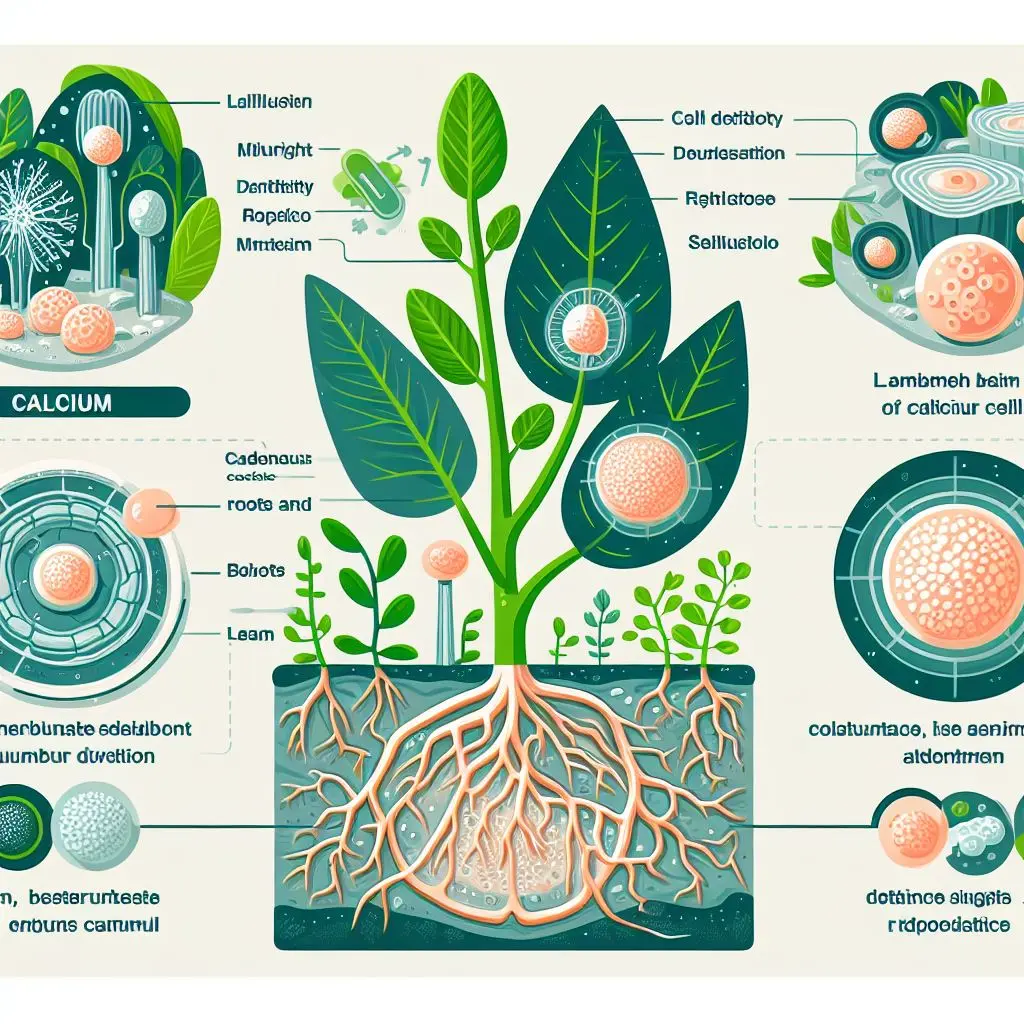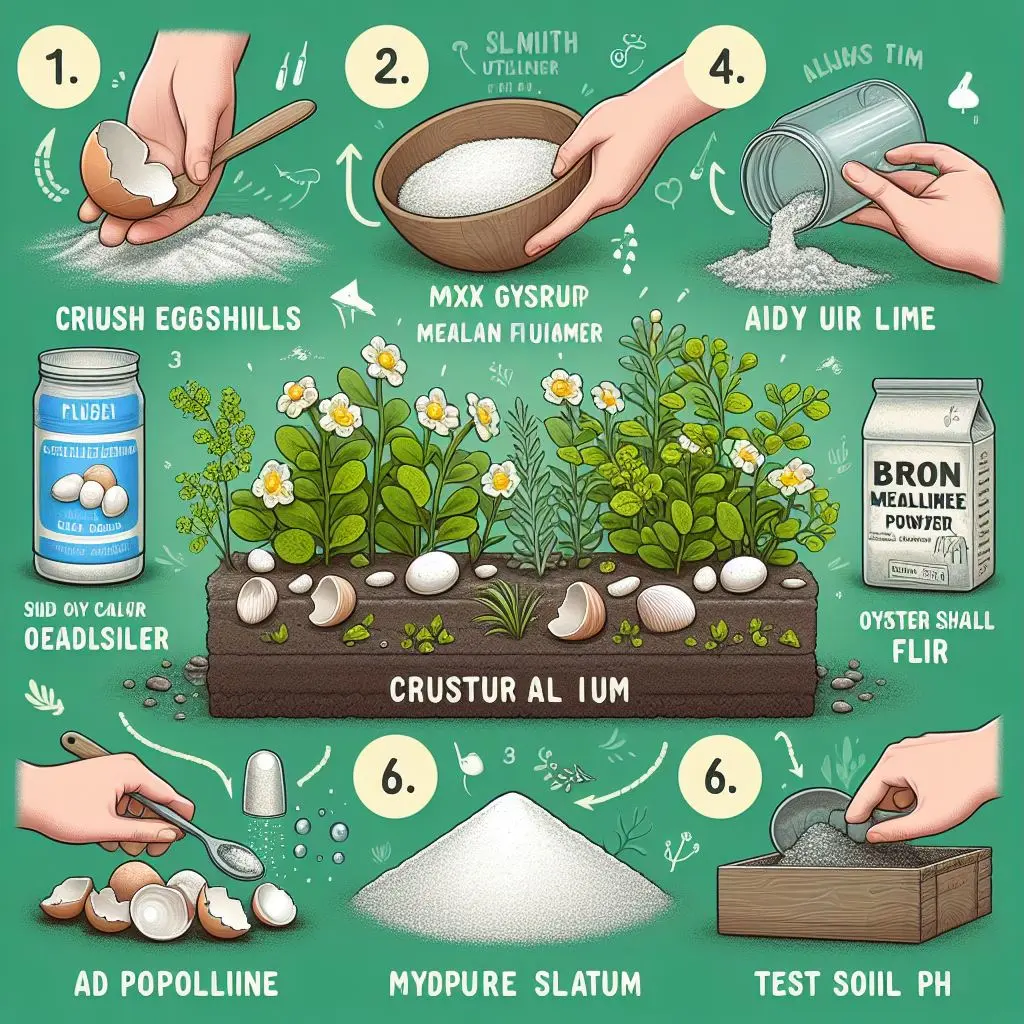Calcium is considered one of the essential elements for plants, exerting diverse effects on their growth and well-being. The presence of calcium in plants acts as a deterrent against the development of various pests and diseases. Calcium can play a crucial role in maintaining the stability of the plant cell membranes. While calcium can have positive effects on plants, lack of proper knowledge regarding its correct usage can lead to complications.
| Aspect | Information |
| Calcium Absorption | The level of calcium in the soil does not indicate its absorption by plants. |
| Cation Exchange Capacity (CEC) | CEC reflects the soil’s ability to absorb and retain nutrients like calcium. |
| Soil Test | A professional soil test determines CEC, suggesting organic matter additions. |
| Soil pH | Higher pH soils generally contain more calcium. |
| CEC and Nutrient Retention | Higher CEC (more organic matter and clay) retains water and nutrients better. |
| Soil Types | Sandy soils with low CEC are more prone to nutrient deficiencies. |
| Soil Adjustments | Recommendations may include adding organic matter, lime, or sulfur. |
| Optimizing Calcium Access | Balancing CEC increase and pH adjustment enhances calcium availability. |
Understanding the importance of adding calcium to the soil and recognizing signs of its deficiency is vital for anyone involved in the care of plants. It serves as a preventive measure against pests and diseases, contributing to the overall health and resilience of the plant. Proper utilization of calcium is key to ensuring its positive impact, and familiarity with the nuances of adding calcium to the soil is essential for plant enthusiasts.
Using Lime or Gypsum:
Page Contents
ToggleIn the initial step, it is crucial to examine the soil pH to determine the appropriate amendment for adding calcium. The most common additives in this regard are lime or gypsum. By testing the soil pH, you can easily identify which of these is a suitable choice.
If you intend to increase the soil pH, lime can be employed. To maintain its stability, gypsum can also be utilized. When adding additives to a large area of soil, using a fertilizer spreader is advisable. It’s important to note that the volume of these additives significantly depends on the soil pH level and area.
Utilizing Eggshell Membranes:
One effective method to add calcium to the soil is by using eggshell membranes. To do this, collect a substantial amount of eggshell membranes and place them in a container, allowing them to dry for 2 to 3 days. The dryness of the eggshell membranes ensures complete absorption of calcium into the soil.
Once the eggshell membranes are dry, grind them into a powder using a mixer. If the eggshell membranes are well-dried, this step will be most effective. Mix the obtained powder with a portion of the soil, then distribute it in your garden, flower bed, or potted plants until it is thoroughly integrated with the soil. Consider the growth of the plants, and if you feel it’s progressing slowly or encountering issues, you can use a larger quantity of this mixture.
Role of Calcium in Plants:

Before delving into the details of adding calcium to the soil and signs of its deficiency, it’s beneficial to understand its role in plants. Calcium enhances the strength of plant tissues and reinforces their cell walls. It reduces the production of the hormone ethylene, leading to improved quality and firmness of plant fruits. When plants receive the necessary calcium, their resistance to environmental stresses increases.
Calcium significantly aids in regulating plant stomata, promoting growth. It plays a crucial role in cellular divisions, activating cells and contributing to the overall cellular structure.
Adding Calcium to Soil Timing:
The calcium level in your soil doesn’t provide information about its absorption by plants.
A key term for calcium absorption in soil is Cation Exchange Capacity (CEC). Imagine soil as a reservoir storing plant nutrients, such as calcium and magnesium. CEC is the soil’s relative ability to absorb and retain a specific nutrient in the form of cations or positively charged ions. Knowing this, questions about whether your plants receive enough calcium and what you can do if they don’t are directly related to the CEC level and also the pH of your soil. Soils with higher pH levels usually contain more calcium.
A professional soil test determines the CEC of your soil. The higher the CEC, the more organic matter and clay your soil contains, which is good because it retains water and nutrients, including calcium, better than sandy soil. Low CEC indicates sandy soil, which is more prone to nutrient deficiencies as they leach out more quickly.
Based on CEC, a soil test may recommend adding organic matter to your soil. It also indicates whether you should make your soil less acidic by adding lime or more acidic by adding sulfur. A combination of increased CEC and pH adjustment enhances the availability of calcium to your garden produce.
Symptoms of Calcium Deficiency in Soil:
A deficiency of calcium in the soil is accompanied by significant symptoms, the most important of which include:
- Stunted or weak plant growth
- Formation of twisting in leaves
- Observation of spots on young leaves
- Inhibition of shoot growth
- Shortening or death of root tips
- Burned tips of leaves
- Damage to the plant’s fruits
How can we add calcium to the soil?

Calcium is a crucial nutrient that plants highly depend on. When discussing the use of calcium, excessive consumption is not recommended. Overuse of calcium can lead to an increase in soil pH. An elevated pH affects the absorption of nutrients present in fertilizers.
To determine the appropriate time for adding calcium to the soil, you’ll need a professional soil test. This is not just a simple pH test that can be easily done at home. Conducting a professional soil test allows for the accurate analysis of the calcium level in the soil. This helps understand the precise amount of calcium needed to be added.
FAQs
Frequently Asked Questions on Adding Calcium to Soil and Symptoms of Its Deficiency:
- Why, despite sufficient calcium in the soil, are plants sometimes unable to uptake it?
Sometimes, even when there is sufficient calcium in the soil, plants may struggle to absorb it. This issue is often related to factors such as the CEC (cation exchange capacity) and pH levels of the soil.
- What is Bone Meal used for in increasing soil calcium?
Bone meal is a fertilizer with low solubility and high phosphates. It is utilized in soils where there is a desire to increase pH. This fertilizer is a suitable choice for bulbs and root plants, and it can have positive effects on them.
- What is the application of Dolomitic Lime (Calcium Carbonate)?
Dolomitic lime, or calcium carbonate, not only adds sufficient calcium to the soil but also increases the pH in magnesium-deficient soils. If, during tests, you discover an increased magnesium level compared to the past, you may consider using a different calcium-containing product.







